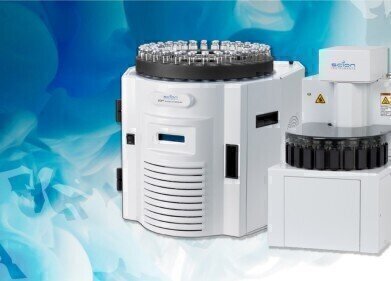Industrial News
Introducing the Slippery Subject of Soap Chromatography
Aug 11 2014
Separation of ionic solutes can be difficult in reverse-phase high performance liquid chromatography (HPLC). Reverse-phase HPLC uses a hydrophobic interaction to separate molecules. A non-polar sample molecule will be retained by the non-polar stationary phase, provided it is not too hydrophilic. Ionic molecules tend to be hydrophilic, hence the difficulty in separation using reverse-phase HPLC.
Ion suppression was initially used to increase the hydrophobicity of ionic molecules. This was achieved by pH adjustment of the mobile phase. Limitations of ion suppression led to further developments in the chromatography of ionized molecules.
Soap Chromatography
In the 1970’s the concept of ion-pair chromatography was developed. A counter ion added to the mobile phase allowed an ion-pair to be formed with a solute. The structure of the counter ion, a hydrophilic head with a hydrophobic tail, is similar to a soap molecule. Hence, the term ‘soap’ chromatography was used in the early days of the technique’s development. Separation occurs because of differences in the hydrophobic properties of the solutes.
How does ‘Soap’ Chromatography work?
When an ion-pair is formed, the alkyl chain of the counter ion gives the ion-pair an increased hydrophobicity. This allows the ion-pair to be retained by the non-polar, hydrophobic stationary phase. A longer alkyl chain increases the retention properties compared with a shorter alkyl chain.
A negatively charged counter ion is used to retain positively charged solutes; conversely a positively charged counter ion is used for negatively charged solutes. The counter ion is often referred to as an organic modifier.
Ion Pair Reverse-Phase Chromatography
An ion-pair reverse-phase separation can be broken down into five basic steps:
- Generate equilibrium in the reverse-phase column by flushing through a mobile phase, with an organic modifier added. The modifier is added to alter the polarity and hydrophobic nature of the mobile phase. During the equilibrium process, the modifier’s alkyl tail combines with the hydrophobic stationary phase, leaving the hydrophilic head of the molecule exposed.
- The sample is then added to the mobile phase and pumped through the column. Parameters such as pH and flow-rate are chosen to allow the maximum adsorption of the sample onto the modified stationary phase.
- The separation phase is carried out next. The aim is to release the bound solutes from the stationary phase back into the mobile phase where they can be eluted and detected. Altering the hydrophobicity of the mobile phase, by adding increasing amounts of the counter ion, desorbs the analyte from the stationary phase depending on its hydrophobicity.
- Any remaining solutes are then desorbed using a high concentration of organic modifier in the mobile phase. This step is designed to flush unwanted solutes from the column.
- The final step is to return the column to equilibrium with the original mobile phase.
The following article describes in detail how this technique is used in biochemical analysis: Ion Pair Reverse-Phase Chromatography: A Versatile Platform for the Analysis of RNA.
Image Source
Digital Edition
Chromatography Today - Buyers' Guide 2022
October 2023
In This Edition Modern & Practical Applications - Accelerating ADC Development with Mass Spectrometry - Implementing High-Resolution Ion Mobility into Peptide Mapping Workflows Chromatogr...
View all digital editions
Events
Apr 23 2024 Kintex, South Korea
Apr 23 2024 Seoul, South Korea
Apr 28 2024 Montreal, Quebec, Canada
May 05 2024 Seville, Spain
May 15 2024 Birmingham, UK














